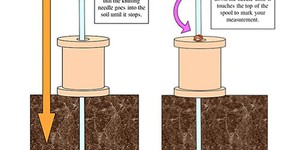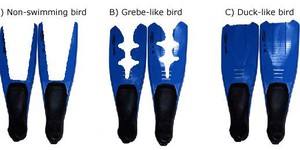Industry, Innovation and Infrastructure, Kindergarten Science Projects (11 results)
The United Nations Sustainable Development Goals (UNSDGs) are a blueprint to achieve a better and more sustainable future for all.
These projects explore topics key to Industry, Innovation and Infrastructure: Build resilient infrastructure, promote sustainable industrialization and foster innovation.
These projects explore topics key to Industry, Innovation and Infrastructure: Build resilient infrastructure, promote sustainable industrialization and foster innovation.
Science Buddies' kindergarten science projects are the perfect way for kindergarten students to have fun exploring science, technology, engineering, and math (STEM). Our kindergarten projects are written and tested by scientists and are specifically created for use by students in kindergarten. Students can choose to follow the science experiment as written or put their own spin on the project.
For a personalized list of science projects, kindergarten students can use the Science Buddies Topic Selection Wizard. The wizard asks students to respond to a series of simple statements and then uses their answers to recommend age-appropriate projects that fit their interests.
Let us help you find a science project that fits your interests, with our Topic Selection Wizard.|
Select a resource
Filter by
Coding Projects
Sort by
|
Batteries are expensive, but you can make one for exactly 24 cents! In this experiment, you will make your own voltaic pile using pennies and nickels. How many coins in the pile will make the most electricity?
Read more
Have you ever wanted to build your very own robot from scratch? Bristlebots are a cheap, easy, and fun-to-build robot made from the head of a toothbrush, a battery, and a small motor. Once completed, they buzz along the top of a table like bugs. How can you make a bristlebot go faster? In this project, you will build bristlebots from two different types of toothbrushes, and race them against each other to find out.
Read more
New
Can AI understand human language? In the future, AI could aid in emergency interpretive service in the hospital when translators aren't available. But can current AI algorithms understand non-verbal languages like sign language? In this science project, you will test whether AI can learn sign language gestures or phrases to see if it can be used for interpretation.
Read more
Do you like playing with play dough; or modeling clay? Wouldn't it be cool if you could add lights, sound, or even motion to your play dough creations? In this project, you will use play dough that conducts electricity, which will allow you to connect lights to your sculptures!
This project is the first in a three-part series on play dough circuits, which can all be done with the same materials. We recommend doing the projects in order.
Read more
Have you ever ridden on a hovercraft? It is like gliding on a cushion of air! In this science project, you will make your own mini hovercraft using a CD or DVD and a balloon and investigate how the amount of air in the balloon affects how long the hovercraft hovers.
Read more
Skyscrapers are impressive structures. What does it take to design a building so tall? Engineers use strong materials and innovative design to push the limits of gravity. They use special tables to simulate earthquakes and test models of their buildings. In this project, you will build your own earthquake table and see how tall you can make a tower out of LEGO® bricks. You can even measure how hard your earthquake table shakes using the accelerometer of your smartphone and a sensor app.
Read more
New
Have you ever seen a waiter balance an entire tray of drinks without spilling any? How do they do it? Do you think you could build a robot waiter that can do the same thing? In this project, you will learn how to build a self-balancing robotic tray. You can incorporate the auto-leveling tray into one of our many other robotics projects, like the Bluebot or robotic arm.
Read more
Have you ever seen a magician float an object in the air? If so, you might think that levitation (making things float) is just a magic trick, but the truth is you can use an invisible physical force to levitate a magnet! Try this science project to find out how.
Read more
Electricity powers many of the devices we use every day, from lights to video games and computers. Engineers have to use certain materials to make electrical devices work. In this experiment, you will find out which materials let electricity flow through them (conductors) and which ones prevent electricity from flowing through them (insulators).
Read more
Do you think a sandcastle can support a brick? How can you change a sandcastle to make it support more weight? Find out in this fun science project!
Read more
Have you ever had to dig a hole in really hard soil? It is a lot of work! In this science project you can make an instrument to test the soil and find out how compacted it is, before you dig!
Read more
Do you wish that you had duck feet? Aside from being a fun Dr. Seuss story, there is a lot you can learn about hydrodynamics by looking at the feet of birds. How are the feet of birds that swim unique? Find out in this experiment.
Read more
|

















